Slanted FlyingJournal of Tai Chi Chuan
Training
A Jazz Approach to Taijiquan
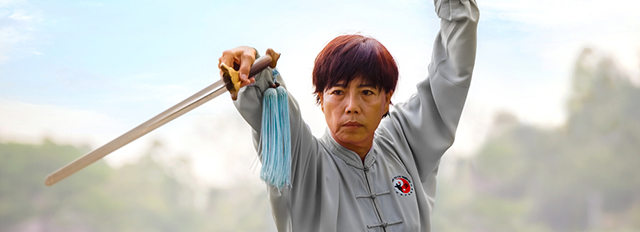
Jazz music has varying degrees of improvisation in its ensemble (and solo) playing. There is a structure, with melody, tempo, key signature, chord progression, and other characteristics for each song, although these can be modified. But there is also improvisation, with players rarely, if ever, trying to play a song exactly the same way each time. This is in contrast to, for example, classical music where practically every aspect of the song is notated and fixed by the musical score. In classical music, the musicians attempt to play the way that is indicated in the score, and therefore the same way each time the song is played.
Many Taijiquan (太極拳) practitioners practice their solo forms and partner drills as if they are trying to follow a fixed score. They try to be exactly like their teacher, and attempt to repeat the same way each time they do the form or drill. When first learning, this approach is correct, but every experienced practitioner likely has their own flavor in their art, especially once they learn how to learn from themselves.
There’s a story that goes something like this: A Taijiquan student from the West was able to spend significant time studying with a master in Asia, but he did not know if he would be able to return in the future for additional study and corrections due to the master’s advanced age. Since he did not know how long she would be around and able to teach, he was very diligent in his studies, trying to faithfully imitate every detail of the master’s movements. After returning home, his friend was very interested in seeing what he had learned, so the student performed for him. When he was done, his friend asked him: “Why were you moving like an old woman?”
Variety is implied in various sayings, and one states that from one example a practitioner should extrapolate to a thousand different applications of a technique. So, the one way that a technique is performed in the solo form is merely one way of many. For those who only desire to do solo forms, only having one way is perhaps not detrimental, but when interacting with an opponent, we know that there are an infinite number of variations. Applying a technique requires adjustments to account for the infinite variations of the interactions with another person.
We need the ability to be spontaneous, while adhering to Taijiquan principles, during free play or fighting with a partner or an opponent. We cannot adhere strictly to one fixed way of moving like we may do when strictly following a choreographed form. In these spontaneous situations, we need the ability to appropriately answer the situations presented, and cannot rely on the sequences in the form, or one’s teacher’s movements; we need to have a confident inner resource to act appropriately in spontaneous situations.
Even when practicing a fixed and repetitive two-person drill, there are subtle variations in each repetition, and practitioners will benefit from being aware of as many subtle differences as they can sense. I believe that each repetition of a drill will be unique, especially when interacting with someone else. Even when we are trying to replicate one pattern over and over, we should also try to notice the inevitable differences.
There are different styles of Taijiquan (陳 Chen, 楊 Yang, 吳 Wu, 武/郝 Wu/Hao, 孫 Sun, etc.), and these different styles came from skilled individuals varying the forms that they were taught. Yes, one needs to have skill and understanding prior to making changes, but the individual preferences of those masters went into the creation of their styles. From my perspective, all of these recognized styles, despite having differing characteristics, emphases, and flavors, all use the underlying principles of Taijiquan, and all are correct practice; one style is not right and another wrong.
Even within a particular style (or even within one school) students can also often learn differences in principles between how weapons work is done and how one does things without weapons. For example, sword (劍 jian) can allow a further forward shift into the front leg than would be advisable for weaponless forms and interactions. This is because practitioners do not need to be overly concerned with the possibility that an opponent will grab the sharp weapon and pull, and the length of the weapon means that you are typically too far away from an opponent for them to be able to grab your arm when you are thrusting the sword at them. Shifting farther forward may give the swordsman a few extra centimeters of reach.
Similarly, a long shafted weapon without sharp edges, like a staff (棍 gun), may require practitioners to maintain more weight on the rear leg due to the leverage that an opponent would have when grabbing the weapon’s shaft and pulling. Other weapons, like the saber (刀 dao), have different emphases than weaponless interactions, and here evasive footwork may be more important, rather than emphasizing from-contact skills (e.g., stick and adhere, connect and follow, zhan nian lian sui 粘黏連隨, or rooting, etc.) – one may not even contact the opponent or their weapon.
Differences in how one’s body is used in relation to a weapon also illustrate possible variations in one’s approach to Taijiquan. For example, a spear (鎗 qiang) is light enough that practitioners can spin it around their body, like during the flower movements that vertically spin the spear from one side of the body to the other side. On the other hand, a historically heavy weapon like a Guandao/Spring and Autumn Falchion/Reclining Moon Knife (偃月刀 yanyuedao) could require practitioners to move their body around the weapon once it is given the momentum during similar vertical spinning movements.



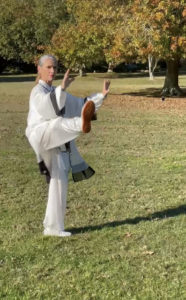
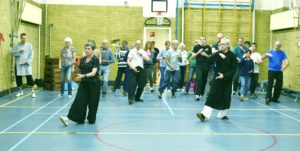
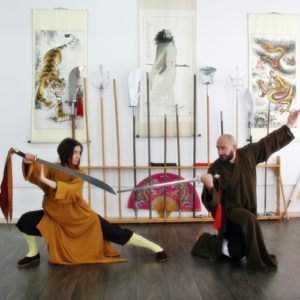
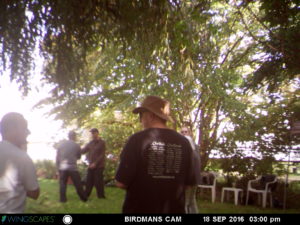







Love this quote, “from one example a practitioner should extrapolate to a thousand different applications of a technique”.
Great article!
In my daily practice, I usually do 5 complete reps (24 move sequence). There could be thousands of ways but I found 6 rough categories.
student – do the basic steps and trying to match the master
monkey – play with the motion, experiment
tiger – move aggressively – isometric tension
seagull – float or coast on the feeling that is left after tiger (like the floating feeling after dropping a heavy back-pack)
old man – do it slowly like its your last time, ever, savor the move
bug on the wall – practice the moves in your mind without moving
There’s a power curve across these, much like a car engine has top-dead-center and timing advanced. Applying power before the TDC or after is the same for muscles or pistons.